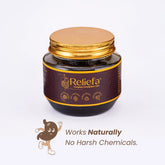Allergic Dermatitis
Allergic Dermatitis in Ayurveda – Understanding 'त्वक् रोग'
Allergic dermatitis is a common skin disorder marked by redness, itching, burning, and rashes triggered by exposure to allergens such as dust, chemicals, foods, or even emotional stress. While modern medicine often manages it with steroids or antihistamines, Ayurveda sees allergic dermatitis as a manifestation of inner imbalance that requires cleansing, pacification, and lifestyle correction for long-lasting relief.
Ayurvedic Viewpoint of Allergic Dermatitis
In Ayurveda, allergic dermatitis can be correlated with conditions like Udarda and Kotha, described under Twak Vikara (skin disorders).
- Pitta dosha imbalance causes burning, redness, and inflammation.
- Kapha dosha aggravation leads to oozing, swelling, and heaviness of lesions.
- Vata dosha disturbance results in dryness, scaling, and severe itching.
When the skin (Twak) is burdened with Ama (toxins) and blood impurities (Rakta Dushti), hypersensitivity reactions appear in the form of dermatitis.
Common Causes (Nidana) of Allergic Dermatitis
- Excessive intake of spicy, sour, oily, and incompatible foods
- Consumption of allergens such as milk, seafood, or preserved foods
- Environmental triggers – dust, pollen, chemicals, and cosmetics
- Stress, irregular sleep, and emotional disturbances
- Poor digestion and accumulation of toxins (Ama)
- Suppression of natural urges, leading to dosha imbalance
Symptoms and Presentation
- Redness, rashes, and itching of the skin
- Burning, oozing, or dryness, depending on dosha dominance
- Recurrent flare-ups after exposure to allergens
- Secondary infections if scratching persists
- Psychological impact due to visible skin irritation
Complications if Ignored
- Chronic eczema-like changes in skin
- Hyperpigmentation and scarring
- Persistent itching leading to infections
- Increased sensitivity and lowered skin immunity
- Emotional stress, anxiety, and disturbed sleep
Ayurvedic Treatment for Allergic Dermatitis
Ayurveda aims to detoxify the system, pacify doshas, and strengthen immunity to prevent recurrent episodes.
1. Shodhana (Purification/Panchkarma Therapies)
- Virechana (Therapeutic Purgation): Removes excess Pitta and toxins.
- Raktamokshana (Bloodletting): Effective in stubborn and chronic cases of skin eruptions.
- Basti (Medicated Enema): Balances Vata and supports skin healing.
2. Shamana (Pacification through medicinal treatment)
Herbal medicines like Neem, Haridra (Turmeric), Manjistha, Khadira, and Sariva act as blood purifiers and anti-allergic agents.
Topical applications with herbal lepas (paste) made of sandalwood, turmeric, and aloe vera soothe itching and burning.
3. Pathya (Dietary Measures)
- Favour cooling, light, and easily digestible foods (barley, moong dal, gourds).
- Avoid spicy, sour, fermented, and packaged foods.
- Include Amla, Aloe vera juice, and ghee for Pitta pacification.
4. Vihara (Lifestyle Guidelines)
- Maintain regular sleep and daily routine.
- Practice yoga, pranayama, and meditation to reduce stress.
- Avoid direct sun exposure and harsh chemical cosmetics.
- Use natural oils like coconut oil or medicated ghritas for skin nourishment.
Key Benefits of the Ayurvedic Treatment for Allergic Dermatitis
Root Cause Treatment
Addresses the root cause – not just symptoms.
Detoxification
Detoxifies blood and removes Ama (toxins).
Strengthens Immunity
Strengthens digestion (Agni) and immunity (Ojas).
Symptom Relief
Provides long-lasting relief from itching, rashes, and flare-ups.
Skin Health
Improves skin texture, clarity, and resilience.
Conclusion
Allergic dermatitis in Ayurveda is seen as an outcome of dosha imbalance and toxin accumulation. With detoxification therapies, herbal remedies, dietary discipline, and stress management, Ayurveda provides a safe and holistic solution that not only relieves symptoms but also prevents recurrence, giving patients healthier skin and a calmer mind.
Frequently Asked Questions (FAQs) on Allergic Dermatitis in Ayurveda
They are related but not always the same. Allergic dermatitis is a type of eczema triggered by allergens like food, dust, chemicals, or cosmetics, whereas eczema can have multiple other causes, too.
Yes. Ayurveda works by balancing doshas, purifying the blood, and improving immunity. With Panchakarma, herbs, diet, and lifestyle changes, flare-ups can be reduced and controlled naturally.
Sour, salty, fermented, fried, and processed foods, along with incompatible combinations like milk with fish or curd with fruits, often worsen the condition.
Yes. Stress, anxiety, and lack of proper sleep aggravate Pitta and Vata, leading to itching, redness, and flare-ups. Stress management is crucial in treatment.
In chronic or severe cases, Panchakarma therapies like Virechana (purgation) and Raktamokshana (bloodletting) are highly effective in reducing toxins and calming inflammation.
Yes. External application of medicated oils like Neem oil, Coconut oil, and Medicated Ghrita soothes the skin, while internal use of ghee nourishes tissues and reduces dryness.
BOOK YOUR CONSULTATION NOW
Find lasting relief from allergic dermatitis with personalized Ayurvedic treatment.
Start Your Healing JourneyAas Ayurveda – Revitalizing Your Body, Mind, and Spirit



